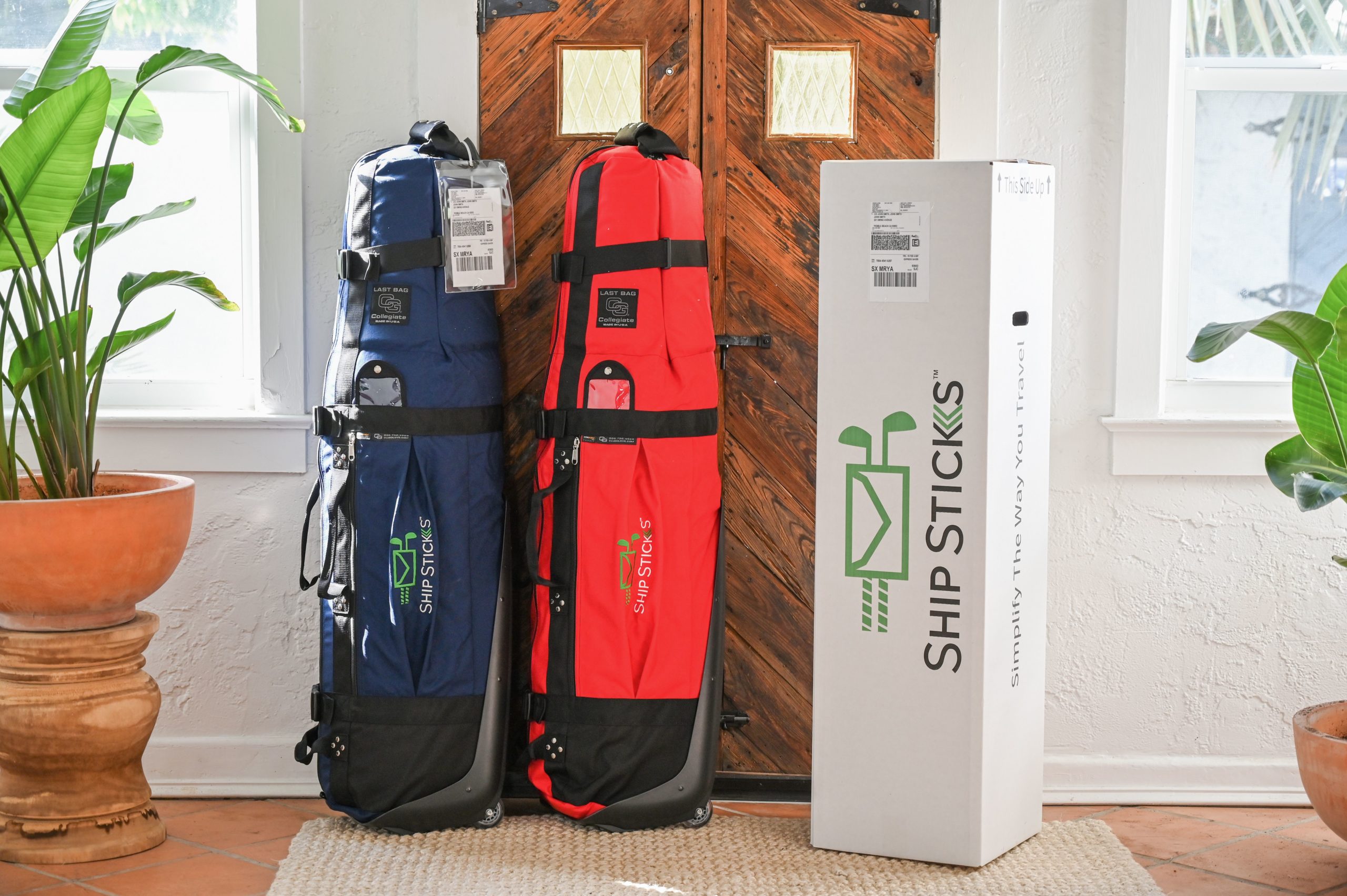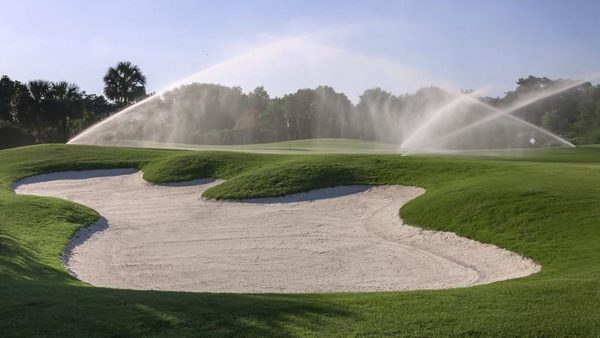Course Openings That Bucked the Trend
Let’s not sugar-coat things: It’s undeniable there have been more golf course closures than openings in the U.S. over the past 15 years, a correction that has seen the overall supply decline by 11% since 2006 after a 44 percent increase from 1986 to 2005.
But do you realize that more than 740 golf courses have opened around the country during that same period? That total of xxx (518+) 18-hole equivalents, during what’s looked at as a “down period” for the industry, is more than the entire golf course supply in nations such as Scotland, Ireland, Spain and South Africa.
These additions have not only bucked a trend, they’ve been good for golfers and the game, improving the overall quality of supply. For instance, 32 of Golfweek’s Top 100 Modern Courses (post 1959) have opened since 2006. Not only should we celebrate these successes that have gone against the grain, but it’s also instructive to examine what makes them special, as well as distinctive from the generation of courses they succeeded.
The runaway success stories in the daily-fee and resort categories over the past 15 years are those courses that are seaside and/or built on sand. Firm-and-fast conditions, compelling contours, an emphasis on the ground game and the suitability for players to walk the course define this new breed of award-winners. Among them are public facilities like Bandon Dunes Resort’s Old Macdonald in Oregon, Sand Valley and Mammoth Dunes at Sand Valley Resort in Wisconsin, Gamble Sands and Wine Valley in Washington, Sweetens Cove in Tennessee, and Streamsong Resort’s three courses in Florida: the Red, Blue and Black.
Each facility is well off the beaten path, yet all have been a hit with course critics and the public. Architect David McLay Kidd, who designed Gamble Sands and Mammoth Dunes at Sand Valley offers an explanation for their appeal.
“Prior to the recession (circa 2008-‘09), my clients were all about selling real estate,” says Kidd. “The developers wanted every couple who came and looked at a lot or spec home to want to buy it because it overlooked a lake, a green, to some kind of view.

The par-4 second hole at Gamble Sands in Eastern Washington. (Photo courtesy: Gamble Sands)
“I realized pretty quickly as the recession started to bite that golf courses, whether they had real estate or not, had to be able to survive on their own. In creating the design, I had to think about how to make sure a golf course would be a success all by itself. Gamble Sands was probably the first incarnation of that thinking. I told the Gebbers family (developers of Gamble Sands) that getting people to come once was easy. The trick was to get people to come twice, or buy a membership. So, they had to get a lot of pleasure out of it.”
Kidd’s designs at Sand Valley’s Mammoth Dunes and at Gamble Sands feature swift-running fairways and ramps, sideboards and backboards to help keep the ball in play and to assist in propelling the ball closer to the hole, provided that you calculate and execute correctly.
“A golfer wants to hit it and see his ball land. What he doesn’t know is what’s going to happen once the ball begins to bounce and roll on hopefully firm turf. It’s fun to see that roll-out. That’s the appeal of links golf, of golf based on the ground game, because you get to see all of these other parts of the shot play out in a drama in front of you that just doesn’t happen with target golf.”
Sand Valley has also benefited from the development leadership of Michael Keiser. The son of Bandon Dunes visionary Mike Keiser, Michael has put his stamp on Sand Valley, yet he can pinpoint what all the modern masterworks have in common.
“Looking at the top courses that have developed since the crash, the first trait they share is that they’re all passion projects,” says Keiser. “They were all the visions of somebody or a team of people who were extremely passionate about bringing fun and beauty to the game.”
Keiser points to other common threads in the success of these courses. “All of these projects are committed architecturally to maximizing the fun on the golf course,” says Keiser. “Also, they’re all built in places of exceptional natural beauty. A final thing they share is that they all have a mission. Whether it’s community redevelopment at Goat Hill Park or Winter Park or ecological restoration at Sand Valley or Streamsong, they’re all striving for something good above and beyond what the golf brings.”

The fifth hole at Mammoth Dunes. (Photo: Evan Schiller for Sand Valley Resort)
The formula for success at Sand Valley, according to Keiser, is pretty simple: “Bring golf that would be in England or Ireland or Scotland to the U.S. and combine it with a new wave of hospitality — great food, comfortable accommodations, but laid-back, authentic and inclusive. The stuffy developments don’t really have a place in our future.”
Florida’s Streamsong Resort is blessed with three remarkable layouts that all rank among Golfweek’s top 60 modern courses in the U.S. For Scott Wilson, Streamsong’s Director of Golf, the success is best explained by one factor—its uniqueness. Hewn from ridges and sand piles that were remnants of a massive phosphate strip mining operation, Streamsong wows with its one-of-a-kind canvas. “Bits and pieces will remind you of Scotland and of Irish classics such as Ballybunion and Lahinch,” says Wilson. “Yet other parts of the property resemble Nebraska. Some parts even look like Florida.”

Streamsong Blue’s 7th hole. (Photo credit: Larry Lambrecht for Streamsong Resort)
From the NGF facility database, however, a curious statistic emerges.
While much of the positive attention has focused on public-access golf courses with a resort and real estate component, that category only comprises 9% of the new courses that have opened in the U.S. since 2006, with 69 entries. In the resort-only category, it’s even smaller — 51 courses, or 7%. In the oft-maligned residential development category of courses, where aesthetics, drama and difficulty often seemed to predominate over playability, 376 courses opened, or 52% of the total. When adding the resort/real estate category, that’s 61% of new courses since 2006 that have been tied into some form of residential development.
The implication is that golf and residential can be an extremely successful mix when done right. It starts with fun, playable golf and excellent design combined with appealing home layouts that have a modern approach to community living, most notably multiple recreational options to complement the golf.
Take Gozzer Ranch Golf and Lake Club in Harrison, Idaho. This private enclave turned Tom Fazio loose on a canvas that includes a beautifully treed valley, rocky bluffs that sprout 100-foot spires and dazzling vistas of Lake Coeur d’Alene, which National Geographic once tabbed as one of the five most beautiful lakes in the world.
As good and as fun as the golf is, however, it’s only one amenity in a very full, family-oriented package. And it’s the entire package that has attracted families, Phil Mickelson’s and Wayne Gretzky’s among them. The Lake Club, with two full-service marinas, heads the list of enticing non-golf activities. The Red Barn family center offers a softball field, tennis, pickleball, basketball courts and a Kids Camp. As a Discovery Land Company development, there is an Outdoor Pursuits program and concierge that can assist with any hiking, fishing, sailing or wakeboarding adventures.
To Discovery Land CEO Michael Meldman, the formula is clear for Gozzer Ranch and his other top-ranked properties. As he told Golf Digest years ago, “At old country clubs, guys would be there trying to get away from their families. Our idea is that you bring the family.”
As further evidence that success in modern private residential golf is more about the lifestyle, experience and fun rather than merely 18 spectacular, demanding holes, look to Bluejack National in Montgomery, Texas. Situated 50 miles north of Houston, Bluejack National starts by checking the box for good-time golf. Tiger Woods Design created the championship 18 and the layout embodies his philosophy perfectly.
“From a design standpoint, I try to create options, to make it friendly, but challenging for all levels,” Woods said at the course’s opening. “I don’t want people to lose a dozen balls when they play our course. I want to get players thinking, with options around the greens. We want lots of variety.”
The trend is clear. A combination of a playable, flexible golf course with family-oriented amenities shows that post-recession residential golf can thrive when done correctly. When paired with the resort layouts that have fared so well, it’s easy to see who has succeeded and why, since 2006: unique setting, a variety of offerings, pure fun.
Or, as David McLay Kidd puts it, “maximum joy, minimum frustration.”
(Top image is courtesy of Gamble Sands)
Short Game.
"*" indicates required fields
How can we help?
NGF Membership Concierge

"Moe"
Learn From NGF Members
 Ship Sticks Secrets to a Hassle-Free Buddies Golf Trip
Ship Sticks Secrets to a Hassle-Free Buddies Golf Trip
Whether you’re the head planner of your upcoming buddies golf trip or simply along for the ride, we’ve gathered a few easy ways to keep everyone in your group happy.
Read More... Golf Course Turf, Soil and Water Quality Diagnostic Testing
Golf Course Turf, Soil and Water Quality Diagnostic Testing
As humans, we see our primary care physician on a regular basis to proactively evaluate our vital signs. Likewise, a superintendent should perform frequent diagnostic testing on their golf course.
Read More... Unlocking Distance: Launch Conditions and Angle of Attack
Unlocking Distance: Launch Conditions and Angle of Attack
We’ve long known that higher launch and lower spin is a powerful combination for generating consistently long and straight tee shots. A key factor in optimizing launch conditions, one often overlooked, is ...
Read More...





